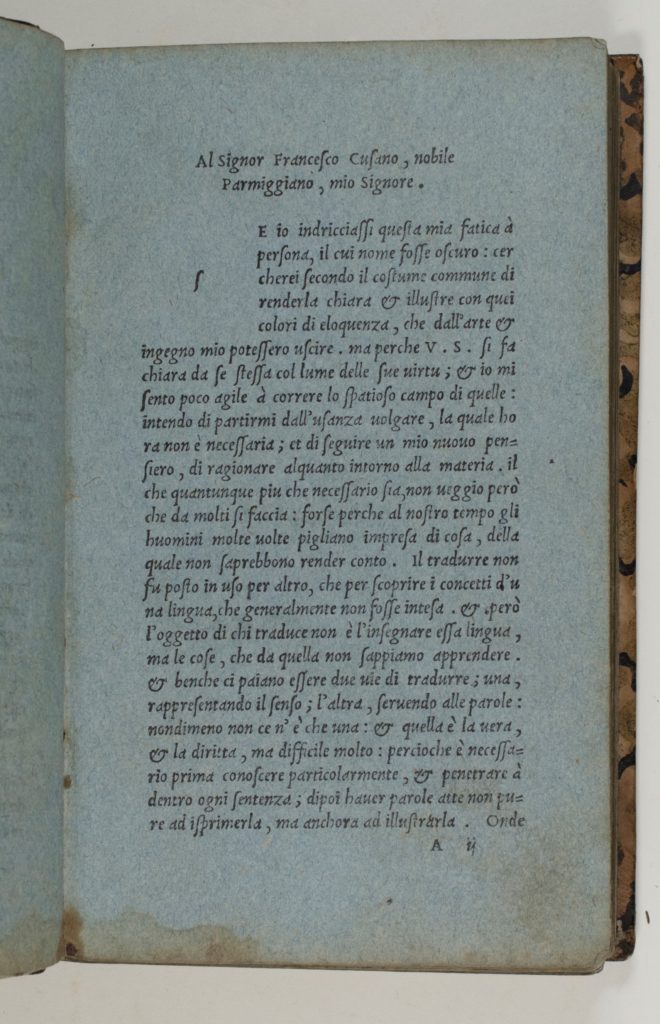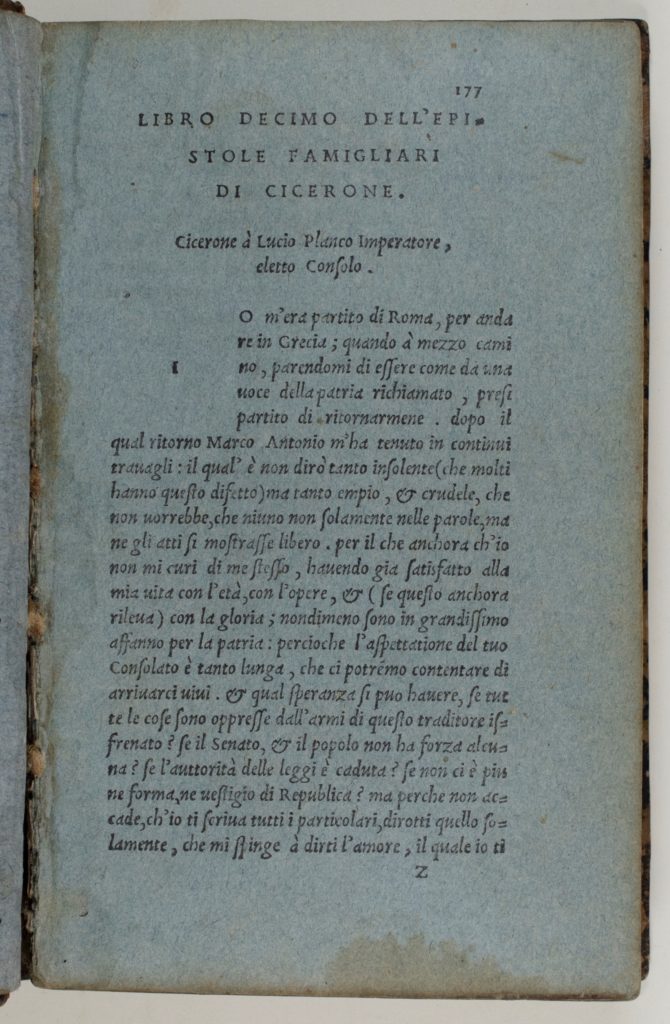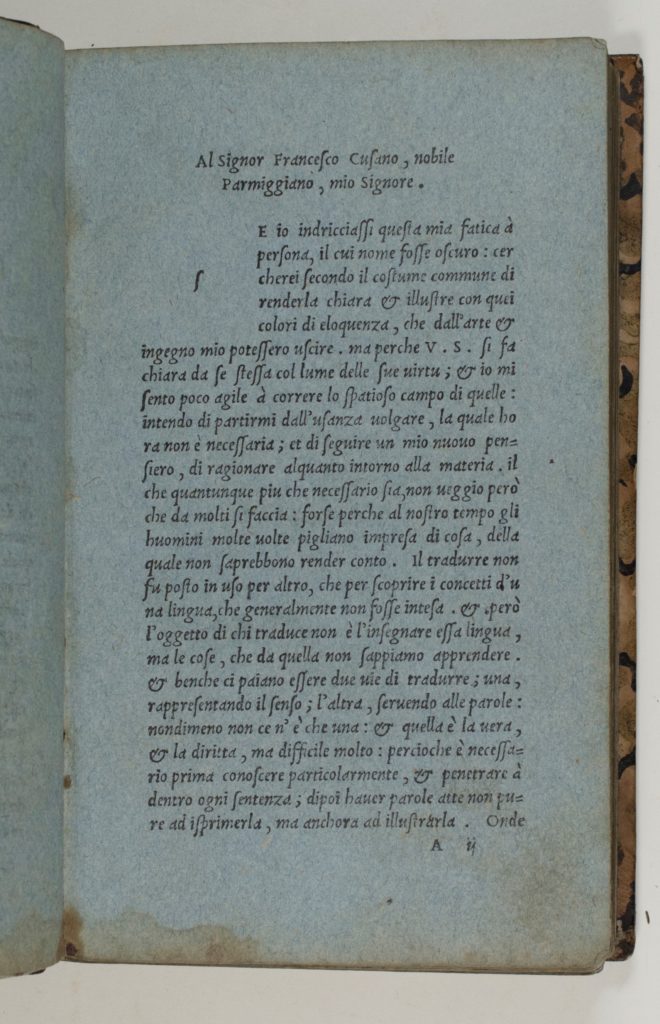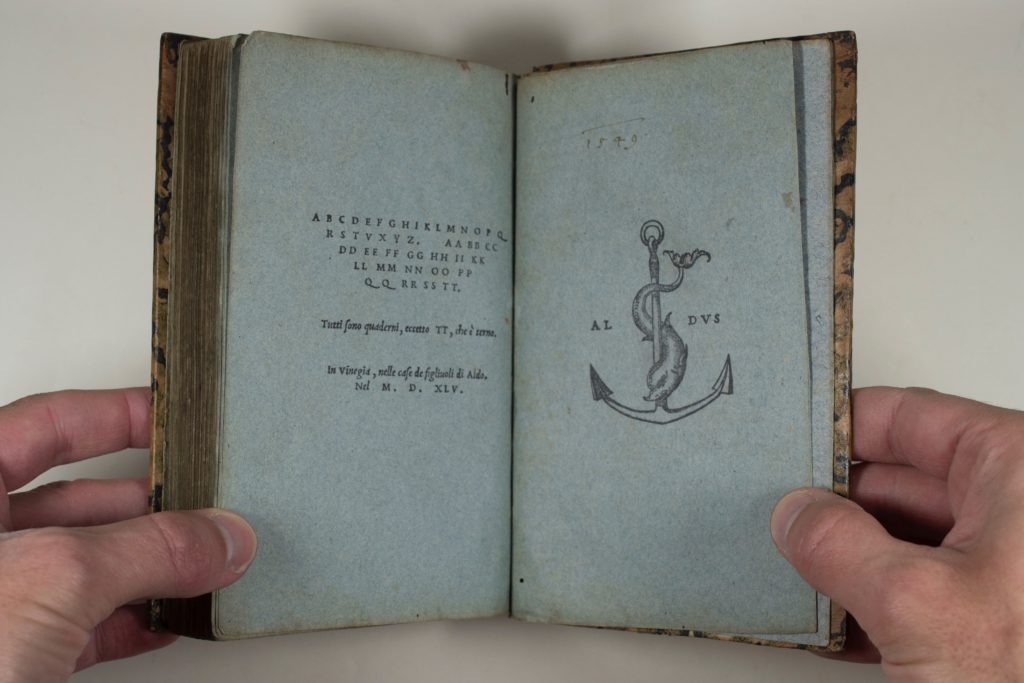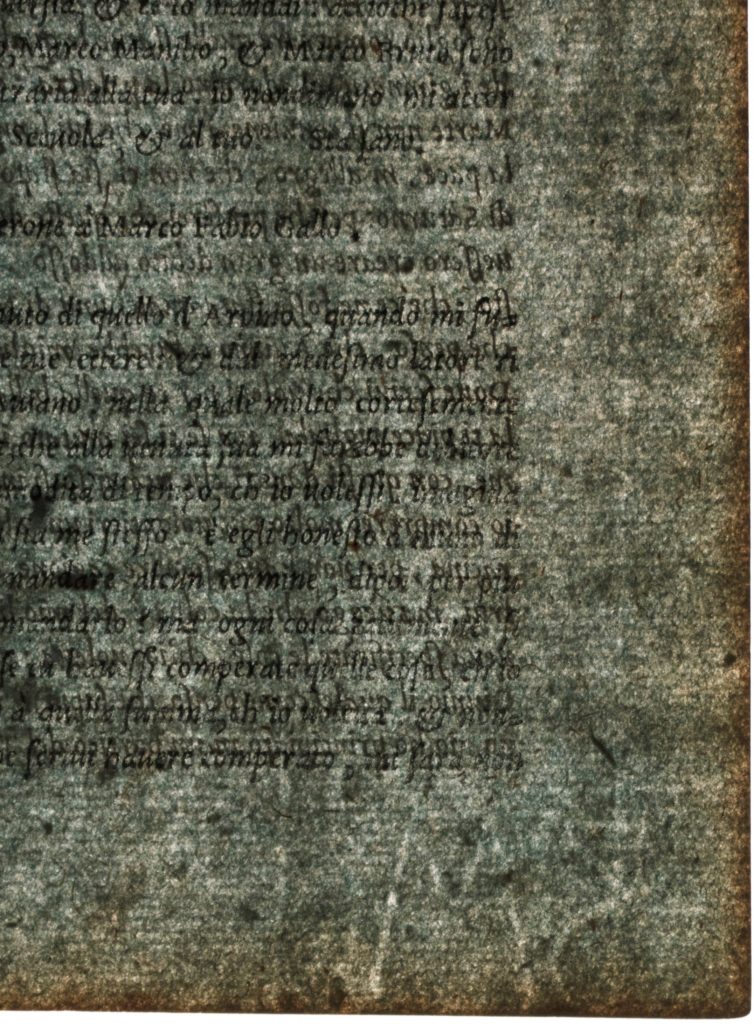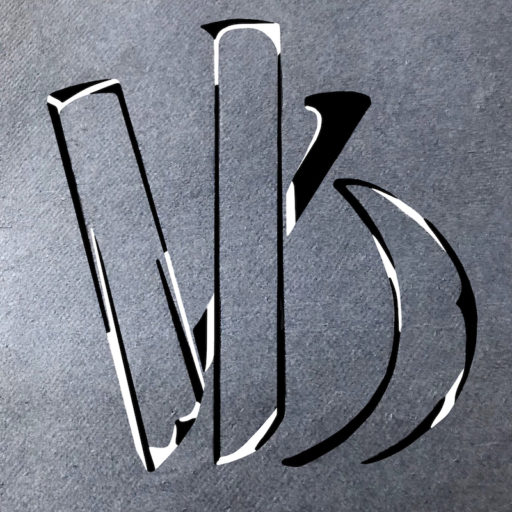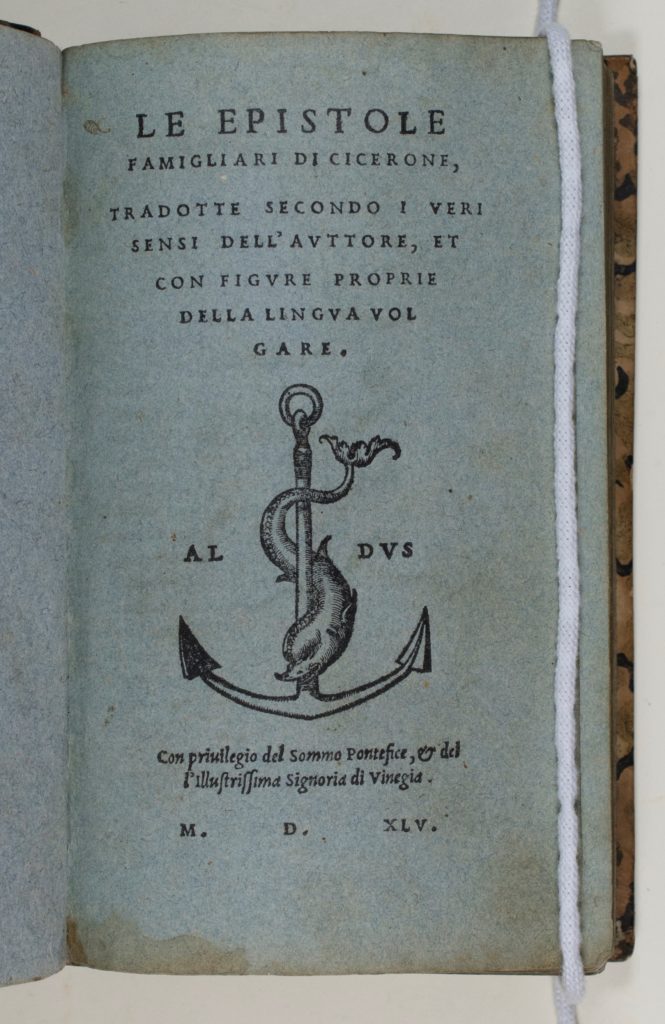
Title | Le epistole famigliari … tradotte secondo i veri sensi dell’auttore
Author and Publisher | Marcus Tullius Cicero (author), Guido Loglio (translator), Paolo Manuzio (publisher)
Date | 1545
Medium | Letterpress on blue paper
Format | 333, [1] leaves; 17cm (8vo)
Institution | The Harry Ransom Center, University of Texas at Austin
Credit line | Giorgio Uzielli (date unkown); images courtesy of Aaron Pratt.
Theme | Antiquity, Mythology and Allegory
Museum number | Uzielli 254
As a vernacular translation of the most famous epistolary collection of Latin antiquity, the Epistole famigliari are situated within a wider canon of Aldine publications in pursuit and fulfilment of the Renaissance ideal of a reborn classical age. This period saw classical writers as inspiration and models of artistry and the philosophy of humanism. Cicero (106–46 BC), in particular, was significant in quattrocento Venice, as his writings lay at the centre of a humanistic debate about whether his or Quintilianus’ civic ideals were more apt to Renaissance rhetoric. Most of the texts printed by the Aldine Press were printed on white paper of good standards, making them affordable to produce and appealing to scholars and wealthy students. Some copies of a print run were printed on special support, whether vellum, royal-size paper or blue paper. As Paolo Sachet suggests, the lower cost of the blue paper and simultaneous aesthetic appeal allowed the Aldine Press to cater to a range of collectors at diverse price points. However, the quality of blue paper used for printing books varies amongst extant copies. For instance, this copy of an edition printed long after Aldo’s death is not even comparable to the refine blue paper used by the founder of the Aldine Press for the Libri de rustica in 1514.
RD
